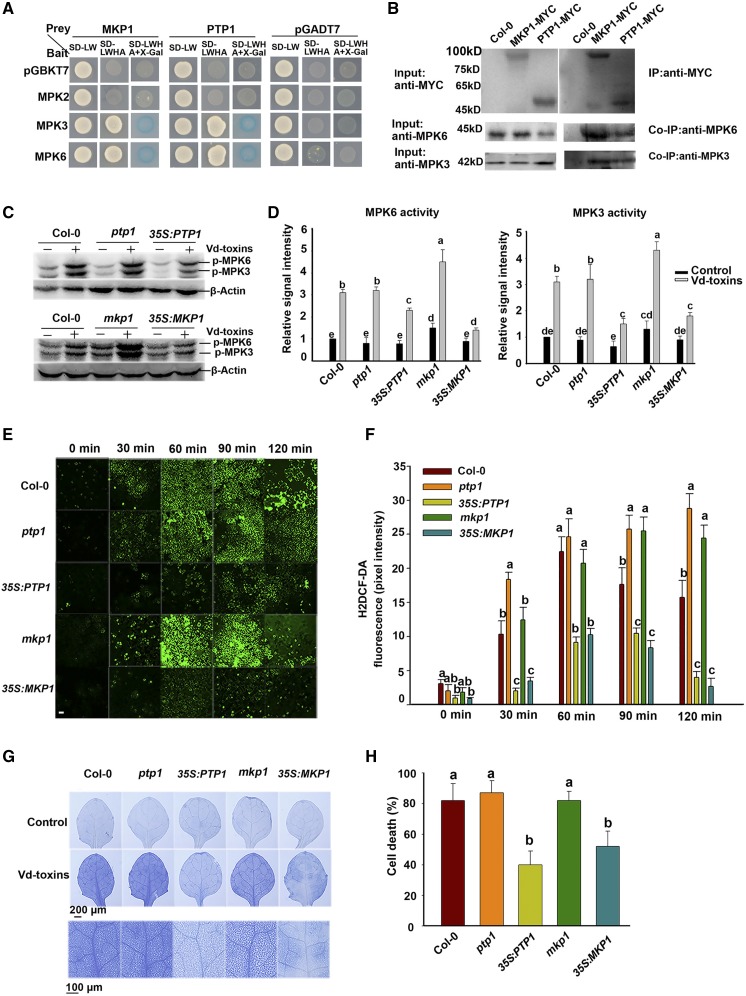Figure 7.
MPK3 and MPK6 interact with PTP1 and MKP1, which negatively regulate H2O2 production in Arabidopsis. A, Interactions of PTP1 and MKP1 with MPK3 and MPK6 in the yeast two-hybrid system. The experiments were performed three times with similar results. B, Co-IP of MPK3 and MPK6 interactions with PTP1 and MKP1. Total proteins were extracted from 15-d-old wild-type Columbia-0 (Col-0) and transgenic 35S:PTP1 and 35S:MKP1 lines. Input and immunoprecipitated proteins were analyzed by independently immunoblotting with anti-MYC, anti-MPK3, and anti-MPK6 antibodies. C, The kinase activities of MPK3 and MPK6 were detected by immunoblotting using anti-phospho-p44/42 MAPK antibodies (p-MPK6 and p-MPK3). Seedlings (7 d old) of the wild type, the ptp1 and mkp1 mutants, and the 35S:PTP1 and 35S:MKP1 lines were treated with 200 μg mL−1 Vd-toxins, and the total proteins were then extracted at various times for immunoblot analysis. β-Actin was used as the loading control. D, Quantification of the kinase activity levels of MPK3 and MPK6 in C using ImageJ software. Results are presented three independent biological replicates. Error bars indicate sd; n = 3. E, H2O2 was detected in the leaves of the wild type, the ptp1 and mkp1 mutants, and the 35S:PTP1 and 35S:MKP1 lines using a fluorescence assay with H2DCF-DA, as described in “Materials and Methods.” Bar = 20 μm. F, Quantification of the H2DCF-DA fluorescence intensities in E. Error bars indicate sd; n = 8. G, Cell death induced by Vd-toxins in cotyledons of the wild type, the ptp1 and mkp1 mutants, and the 35S:PTP1 and 35S:MKP1 lines. Cotyledons of 14-d-old seedlings were treated 14 h with 150 μg mL−1 Vd-toxins and stained with Trypan Blue. H, Quantification of the cell death rates induced by Vd-toxins in G using ImageJ software. Error bars indicate sd; n = 9. Different letters represent significant differences at P < 0.05 by one-way ANOVA with Tukey’s honestly significant difference posthoc tests. All experiments were repeated three times.

